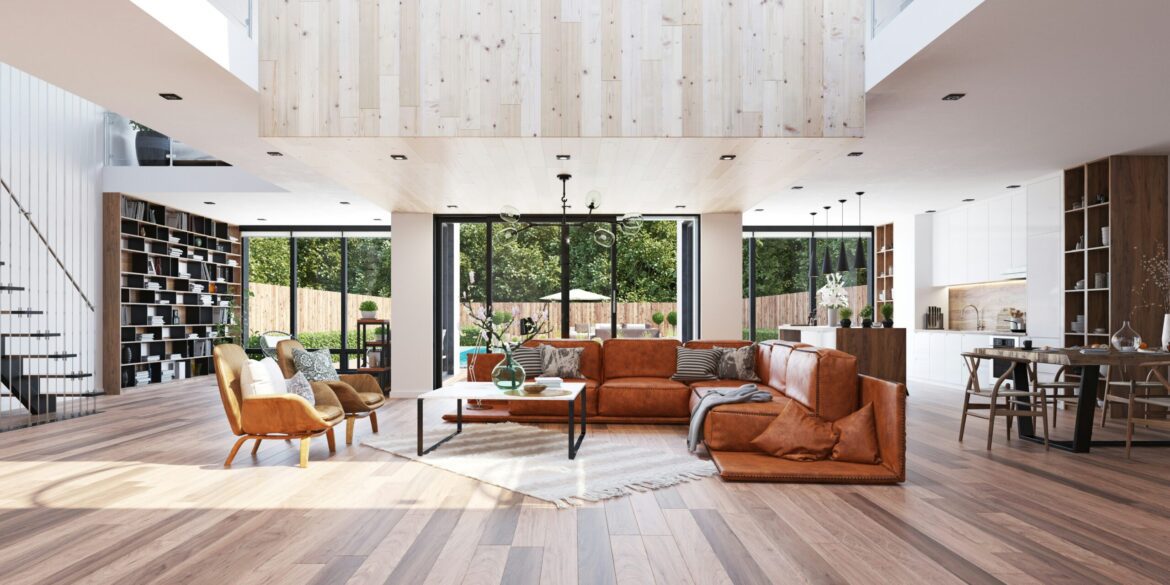The Growing Demand for Green Homes
Sustainable home features have emerged as a major trend in the U.S. real estate market, with more buyers actively seeking homes that are energy-efficient, environmentally friendly, and aligned with their values. As of 2025, the demand for sustainable homes has expanded significantly, driven by a growing awareness of climate change, rising energy costs, and the long-term financial and environmental benefits of green living. Buyers are increasingly willing to pay a premium for homes that are designed with eco-friendly features, creating a shift in the way homes are built and sold across the country.
The U.S. Green Building Council (USGBC) reports that the number of green-certified homes has been steadily increasing, with more builders and developers adopting sustainable practices. From solar panels and energy-efficient appliances to sustainable building materials and smart home systems, eco-friendly features are now considered essential for modern homebuyers.
Popular Sustainable Features in Modern Homes
Several sustainable features are particularly popular among homebuyers in 2025. Solar panels, which generate renewable energy and reduce electricity costs, are among the top choices for environmentally conscious buyers. In addition to solar panels, energy-efficient windows and insulation help homes maintain optimal temperatures, reducing the need for heating and cooling and further lowering energy consumption.
Smart home technology is also playing a significant role in energy conservation. Devices such as smart thermostats, lighting systems, and energy monitors allow homeowners to control and optimize their energy usage. These systems not only enhance the comfort and convenience of living spaces but also offer long-term savings on utility bills.
Sustainable materials, such as bamboo flooring, recycled steel, and low-VOC paints, are becoming increasingly common in new homes. These materials are not only environmentally friendly but also contribute to better indoor air quality and overall health. Builders are also focusing on reducing waste during construction by using reclaimed wood and repurposed materials, further enhancing the eco-friendly aspects of modern homes.
The Financial Benefits of Sustainable Homes
The financial incentives for building or purchasing a sustainable home are a key driver of their growing popularity. In many states, there are tax credits, rebates, and other financial incentives for homeowners who invest in energy-efficient features such as solar panels, energy-efficient HVAC systems, and electric vehicle charging stations. For instance, the Federal Energy Efficiency Tax Credit allows homeowners to deduct up to 30% of the cost of installing solar panels, providing a substantial financial benefit.
In addition to tax credits, sustainable homes often have lower operating costs, making them an attractive option for buyers looking to reduce long-term expenses. Homes equipped with energy-efficient features tend to have lower utility bills, reducing the homeowner’s monthly expenses. This can be particularly appealing for first-time homebuyers, who are often focused on affordability and long-term savings.
Moreover, sustainable homes tend to retain their value better than traditional homes. As buyers continue to prioritize eco-friendly living, homes with green features are more likely to appreciate over time, offering a solid return on investment. This is especially true in regions where sustainability is a top priority, such as California, Oregon, and Washington.
The Future of Sustainable Homes in the U.S.
As sustainability continues to gain importance, the future of green homes looks bright. Builders and developers are incorporating more energy-efficient and eco-friendly features into their designs, while real estate agents are increasingly marketing homes with green certifications and sustainable features. Buyers are also becoming more educated about the long-term benefits of sustainable living, including lower energy costs, improved indoor air quality, and a reduced carbon footprint.
Looking ahead, the demand for green homes is expected to rise, driven by both consumer preferences and government regulations aimed at reducing carbon emissions. With the U.S. government setting ambitious climate goals, more incentives and policies are likely to emerge, further encouraging the adoption of sustainable home features. As a result, the real estate industry will continue to evolve, offering more opportunities for homebuyers who prioritize sustainability.

